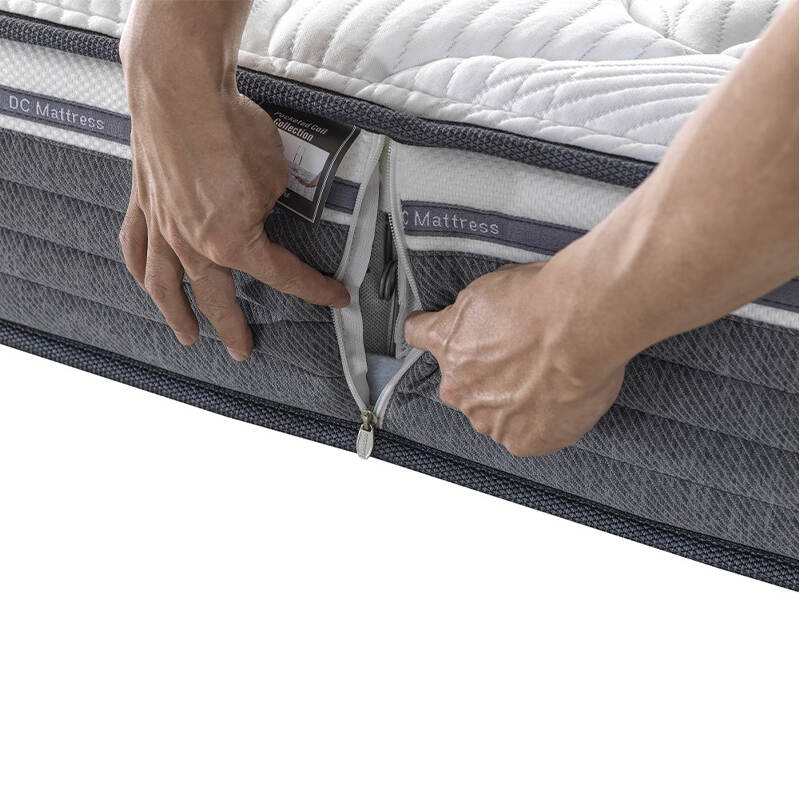
If you are looking to buy a new mattress, you might wonder whether to pick a spring mattress vs foam mattress. Both have their advantages and disadvantages. Knowing the differences can help you decide which one is better for you.
A spring mattress has metal coils inside. These coils help support the body. There are different types of coils, such as open coils, pocket coils, and continuous coils.
The coils inside a spring mattress compress and expand based on pressure. This helps spread the weight evenly. Some spring mattresses also have foam layers on top for extra comfort.
A foam mattress is made from foam instead of coils. It can be made with memory foam, latex foam, or polyurethane foam. These mattresses are known for being comfortable and soft.
A foam mattress adjusts to your body. The foam changes shape based on pressure. This helps spread your weight evenly and relieves pressure points. Foam mattresses come in different firmness levels.
Now let’s compare spring mattresses vs foam mattresses in terms of comfort, support, durability, and price.
Spring Mattress:
It feels firm. The coils give a bouncy feel. But it may not relieve pressure as well as a foam mattress.
Foam Mattress:
It is softer. It adjusts to your body and can reduce pressure on your hips and shoulders. This makes it better for side sleepers.
Spring Mattress:
It can transfer movement. If one person moves, the other person might feel it. This can be a problem for couples.
Foam Mattress:
It absorbs movement. If one person moves, the other person won’t feel it. This is good for couples.
Spring Mattress:
It can last around 7 to 10 years. But after some time, the coils may lose their shape, and the mattress may sag.
Foam Mattress:
It lasts longer. It can last more than 10 years. The foam holds its shape better than coils, but low-quality foam may wear out faster.
Spring Mattress:
They have better airflow because of the coils. This helps keep the mattress cool.
Foam Mattress:
They can trap heat, making you feel warmer at night. Some foam mattresses have cooling technologies, like gel foam, to help keep you cool.
Spring Mattress:
They are usually cheaper than foam mattresses, especially the basic models. However, high-end spring mattresses with better coils may cost more.
Foam Mattress:
Foam mattresses, especially memory foam, tend to be more expensive. But you can find cheaper ones that don’t cost as much, although they might not last as long.
Spring Mattress:
It gives good support for your back. The coils help keep your spine aligned. However, it may not relieve pressure points like a foam mattress does.
Foam Mattress:
A foam mattress, especially memory foam, helps relieve pressure. It’s a good choice for people with joint pain or conditions like arthritis.
Spring Mattress:
It has strong edge support. The coils make the edges firm. You won’t feel like you’re rolling off the bed.
Foam Mattress:
It may not have strong edge support. Soft foam around the edges can make you feel less supported when sitting or sleeping on the edge.
Spring Mattress:
They can make noise. The coils may squeak or creak after some use.
Foam Mattress:
They are quiet. Since there are no coils, they don’t make noise when you move.
Spring mattresses have been around for many years. They are still popular because they give good support. The coil system inside has improved over time.
Foam mattresses are newer. Memory foam was first made by NASA in the 1960s. It became popular because it helps relieve pressure and fits your body. Other types of foam, like latex and gel foam, were later introduced to improve comfort.
Your sleeping position can help you decide which mattress is better. Here’s how each mattress works for different sleeping positions:
Back Sleepers:
A medium-firm spring mattress works well for back sleepers because it gives support to the spine. A medium-firm foam mattress is also a good choice.
Side Sleepers:
A foam mattress is better for side sleepers because it helps relieve pressure on the hips and shoulders.
Stomach Sleepers:
Stomach sleepers need a firm mattress. A spring mattress with firm coils works well. A firm foam mattress can also provide good support.
Combination Sleepers:
If you change positions at night, a medium-firm foam mattress or a hybrid mattress (foam and springs) can offer the right balance of comfort and support.

John, 32, Back Sleeper:
"I used to swear by spring mattresses, but after trying a memory foam mattress, I can’t go back. The foam contours to my body, giving me the perfect amount of support and comfort. My back pain has improved, and I wake up feeling more refreshed."
Sarah, 45, Side Sleeper:
"I’ve always struggled with shoulder pain as a side sleeper. I decided to try a foam mattress, and it was a game-changer. The memory foam relieves the pressure on my shoulders and hips, and I sleep through the night without waking up in pain."
Mark, 29, Stomach Sleeper:
"As a stomach sleeper, I need a firmer surface. I tried both a spring mattress and a foam mattress, and I found that the spring mattress offers the firm support I need without the sinking feeling I got from foam. I’ll stick with springs for now."
Pogreška u formatu e-pošte
emailCannotEmpty
emailDoesExist
pwdLetterLimtTip
inconsistentPwd
pwdLetterLimtTip
inconsistentPwd